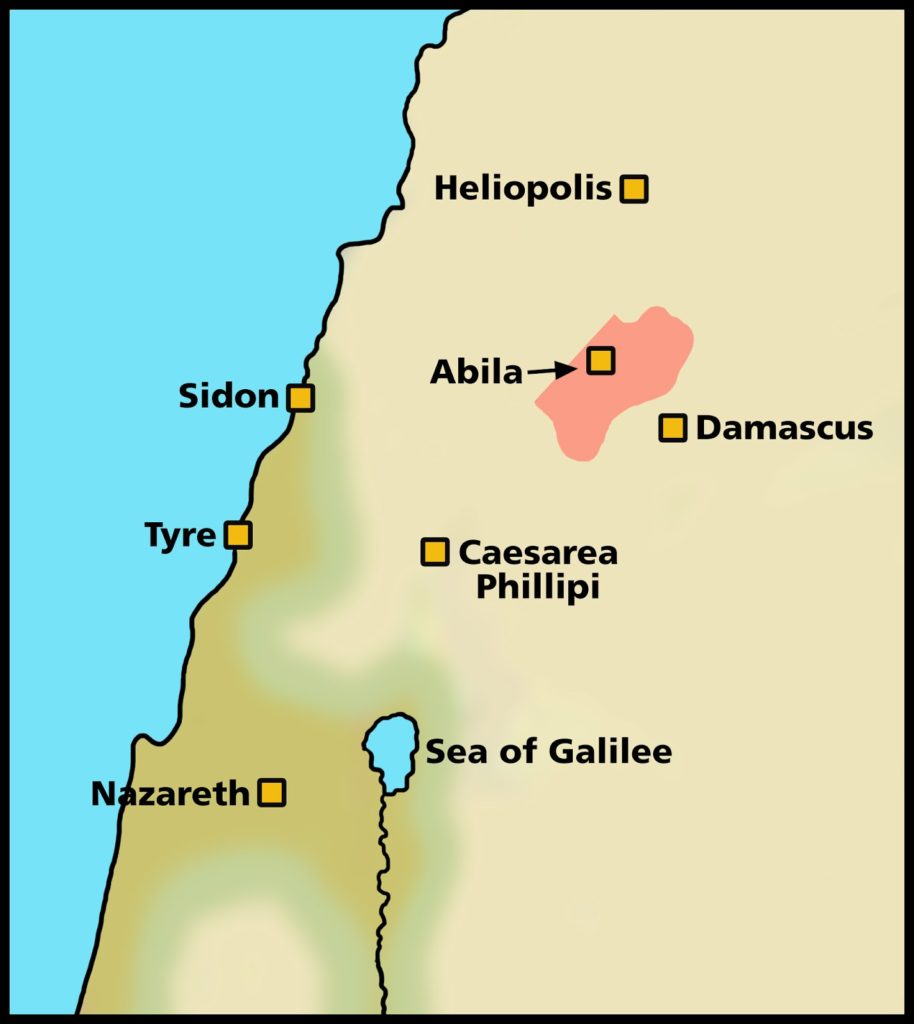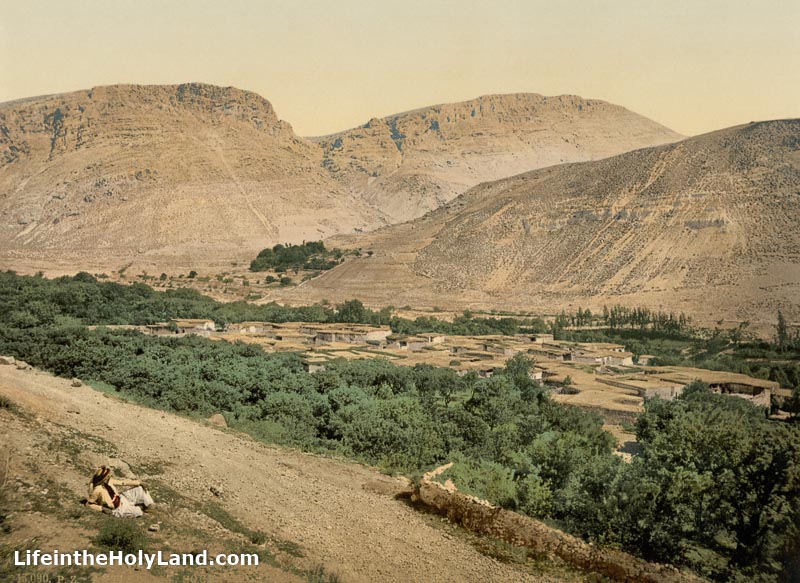This series of posts examines the historical reliability of the New Testament books of Luke and Acts by comparing these books to other ancient textual sources and the archaeological record. In addition, background information on key elements of the text is also given.
One person referred to in Luke 3:1-2 is “Lysanias, tetrarch of Abilene.” Lysanias is one of the more obscure persons mentioned by Luke with one extra-biblical reference being an inscription, dated to the reign of Tiberius, found in the area of Abilene that reads, “. . . a freedman of Lysanias the Tetrarch, having made the road, erected the Temple” (Journal of the Royal Geographical Society of London, V. 20, p. 43). The area known as Abilene was a small district on the eastern side of the Anti-Lebanon mountains that gets its name from Abila, its chief town. The town of Abila shown on the following map was located on the route between Damascus and ancient Heliopolis (modern Baalbek, Lebanon).
Today the village of Suk Wadi Barada marks the spot of ancient Abila. It is situated in Syria, about 10 miles northwest of Damascus. The following photochrom image was taken in the 1890s of the village.
For a brief discussion concerning the dating of the Lysanias inscription noted above, see chapter 7 in F. F. Bruce, The New Testament Documents.
As time permits, a future post may deal with the possibility that there was more than one ruler with the name “Lysanias” connected to the area of Abilene (Abila).
By way of note, the Abila of Abilene that is tied to the account in Luke is distinct from another city by the same name located in the Decapolis to the east of the southern end of the Sea of Galilee.
Further, John Brown University is now in the process of excavating Abila of the Decapolis as described at this link.
For similar correlations between the biblical text and ancient sources, see Bible and Archaeology – Online Museum.

